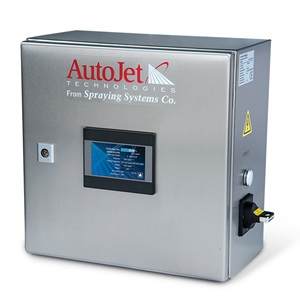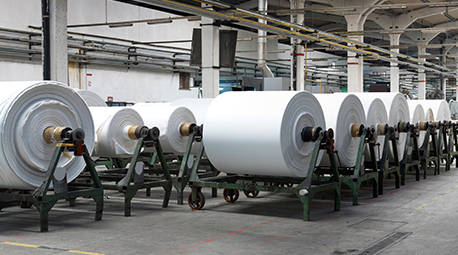A leading company in the preparation, dyeing, stamping and finishing of textiles decided to look for a more efficient and sustainable solution for their chemical treatment process.
Until recently they were immersing the fabrics in two separate baths. Each bath was filled with different chemical products that would ensure the durability of the end product. After each immersion, the sheets needed to be squeezed in the foulard and dried in the oven. This approach added a lot of time and costs to the production process.
With rising energy costs and expensive personnel and production costs the textile company decided to improve the efficiency of their chemical application process.
AutoJet® E2008+ Controller with PulsaJet® Nozzles
 As the world leader in spray technology Spraying Systems Co. was consulted to develop a solution that would deliver the same high quality result but at a lower cost.
As the world leader in spray technology Spraying Systems Co. was consulted to develop a solution that would deliver the same high quality result but at a lower cost.
During the first preliminary visit our local spray expert managed to take away the producers’ concerns about even distribution of the chemicals on the textile. After an in-line test, and the validation of the results by an external laboratory, they understood that we would be able to exceed their expectations.
The solution uses an AutoJet® Spray System consisting of:
- •An AutoJet® 2008+ control panel with pump system
- •10 x PulsaJet® AAB10000AUH-03 nozzles mounted on a spray manifold
Mounted over the textile sheets the nozzles spray the required amount based on the speed of the rolls.
Result
Now that the textile no longer needs to be immersed in two separate baths the textile producer has seen a big impact on the production process.
First of all the increase in efficiency has doubled the production capacity. Additionally, the new spray solution has slashed energy and labour costs in half - not to mention the enormous savings in chemical costs.
Since the textiles only need one drying process, the producer has also seen a 1,5 ton drop in CO2 emissions - a welcome improvement that will help to meet the company’s ambitious sustainability goals.


